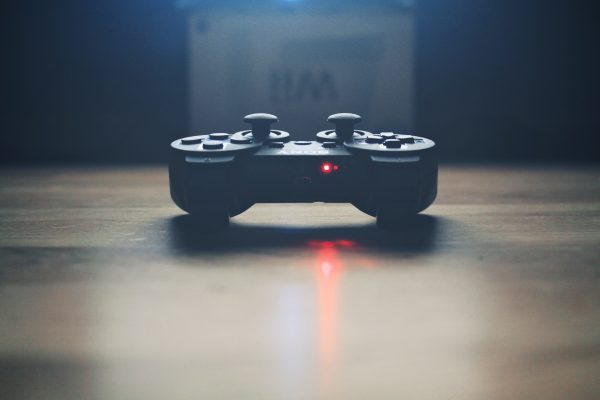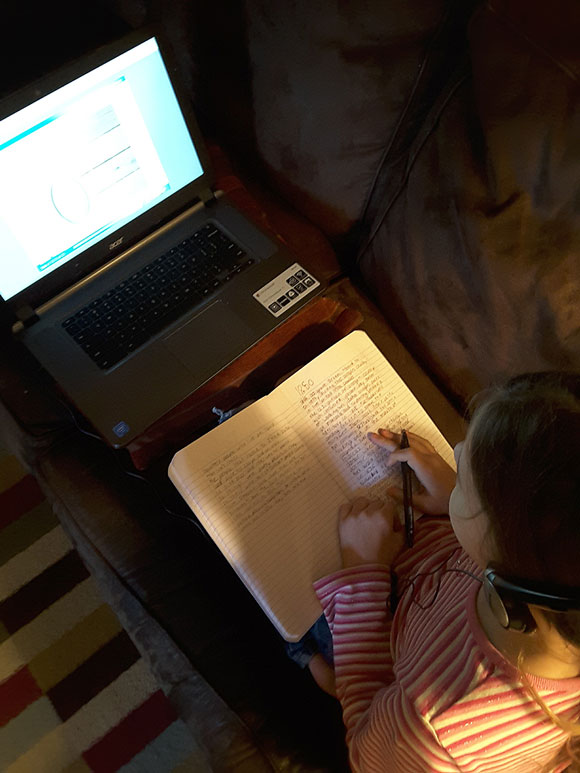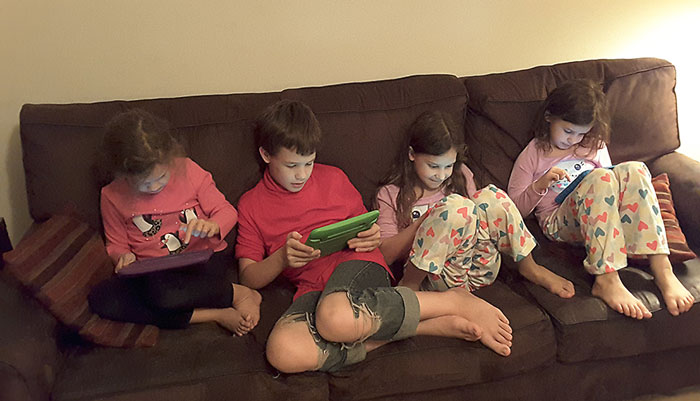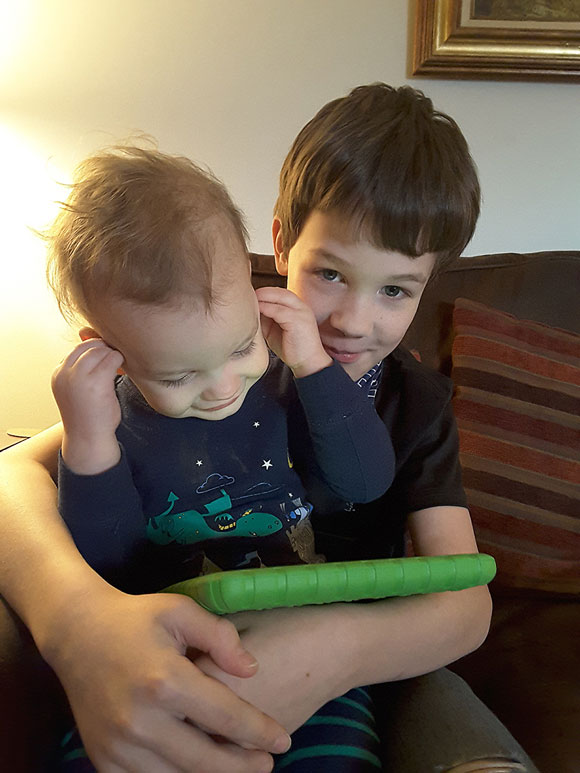
All moms worry. We wonder what effect today’s parenting decisions will have on our children’s futures. And we are especially nervous about things that are outside of our experience or comfort zone. Our children have access to digital tools and programs we did not have growing up. How do we help them to make wise tech choices?
No Hidden Evil
Let’s keep a level head about this. Electronics, like any other tool, can be used in helpful ways and harmful ways. A sharp knife is a great asset in the kitchen. Used wrongly, it can be very damaging. But this doesn’t mean that there is something inherently evil about knives. The sharper the knife, the more beneficial it is, and the more dangerous it can be. It is our job to guide our children in age-appropriate use of tools.
Be careful not to attribute secret powers to digital screens. What makes screens attractive is not an unknown force. Electronics are attractive because of all of their best qualities. They facilitate fun, entertainment, effective work processes, communication, access to information, and mental challenges. These are all good things.
All Screen Time is Not Created Equal
We hear a lot in the media about how much “screen time” the average kid gets or should get every day. But you know from your own experience that there is a wide range of ways that screens can be used. You know the difference between using screen time to pay bills or type up recipes versus enjoying a good Netflix binge. And, by the way, neither of those choices is necessarily morally superior. Each has its place.
My husband gets more than eight hours of “screen time” every day because he works with spreadsheets. I use screens for a wide variety of reasons throughout the day. Here are some ways you might see screen time being used by the kiddos in our home:
- Checking off tasks from Chore Monster
- Getting school assignments from our homeschool assignments blog
- Completing school work online
- Learning a skill (like knitting or drawing) from YouTube
- Experimenting with animation through pixel art
- Reading eBooks, listening to audio books or, best yet, doing both at once!
- “Writing” stories through voice to text recognition apps
- Composing blog posts
- Recording stop-motion videos
- Creating graphics or editing photos
- Listening to digital music
- Watching movies or shows
- Playing video games
That’s right. My kids watch shows and play video games. It’s important that my children have a chance to enjoy the benefits and pleasures technology has to offer while they are under my roof and I can guide them effectively. They know that after a long day, mama and daddy crash in bed and watch a show or surf Facebook. But do they know how we choose what to do and how long to spend on it?
Know Your Kids
There is something in all of us that longs for guidelines, rules, and black and white answers. But at the end of the day, most good parenting comes down to a careful application of wisdom in each particular situation and for each particular child. I know; that’s harder, right? But it’s also good modeling for our kids. Thoughtful application of principals is a much better life-skill than rigid, unexamined rule-following.
Start by watching and listening. What choices are they naturally making on their own? Ask questions about what they are watching, playing or doing. And distinguish between nuances in their thinking.
- There is a difference between having a digital project or hobby they’re itching to get back to, and claiming they can’t find anything to keep their attention outside of the digital world. When my kids start saying, “There’s nothing fun to do outside,” I tell them they just might need more practice looking for it.
- It’s normal to be disappointed when a fun or productive activity has to end. We needn’t expect our kids to be thrilled to put down the screen and take out the trash instead. Everybody needs a transition time when moving from one activity to another. (As I type this, the household is waking up and I’m going to have to put this post aside until later. Deep breath. Coffee. Smile.)
- Drive, passion, and motivation are good qualities. Don’t squelch them. You know what it is like to be excited about a plan and eager to carry it out. The bigger they plan and the more invested they are in it, the harder it is to put down. Respect and encourage their big ideas while modeling how to keep up with other responsibilities in life, too.
- Especially if you are parenting children of various ages, a one-size-fits-all rule for “screen time” probably won’t work. Each child has different interests and different struggles. Use that knowledge to provide tailor-made guidance.
Don’t Forget Phases
Every time I start to panic about a parenting issue that seems like it will never resolve, I realize that last month or last year I was all tied up in knots about a different kid or a different issue. And I remember that we eventually worked our way through the problem, or that the problem naturally resolved itself.
A new app or game can be incredibly absorbing. This is natural. Don’t panic. Watch, wait, and especially keep the channels of communication open. Set guidelines if needed, but don’t spoil their joy by hinting that their excitement should be a source of shame. Remember, kids can become equally absorbed with a new book, a new Lego set or a new sport. This isn’t a screen-specific phenomenon.
Instead of talking about “good” ways to spend time and “bad” ways to spend time, talk about ordering priorities. Good things should be relished. But things should never be more important than people. Ask good questions that help them to determine if they are getting their priorities out of order. And keep in mind that this is a lesson that takes a lifetime to learn!
More Resources
- Is Digital Dangerous? Three Common Concerns
- Are Your Kids Wasting Time on Electronics? Three Questions to Ask
- Why I Stopped Managing My Kids’ Screen Time
- The Ultimate Guide to Relaxed Poetry in Your Morning Time - April 27, 2020
- Holiday Time when Your Family is Anti-Homeschool - November 15, 2018
- When Skill Learning Gets Messy - October 11, 2018




